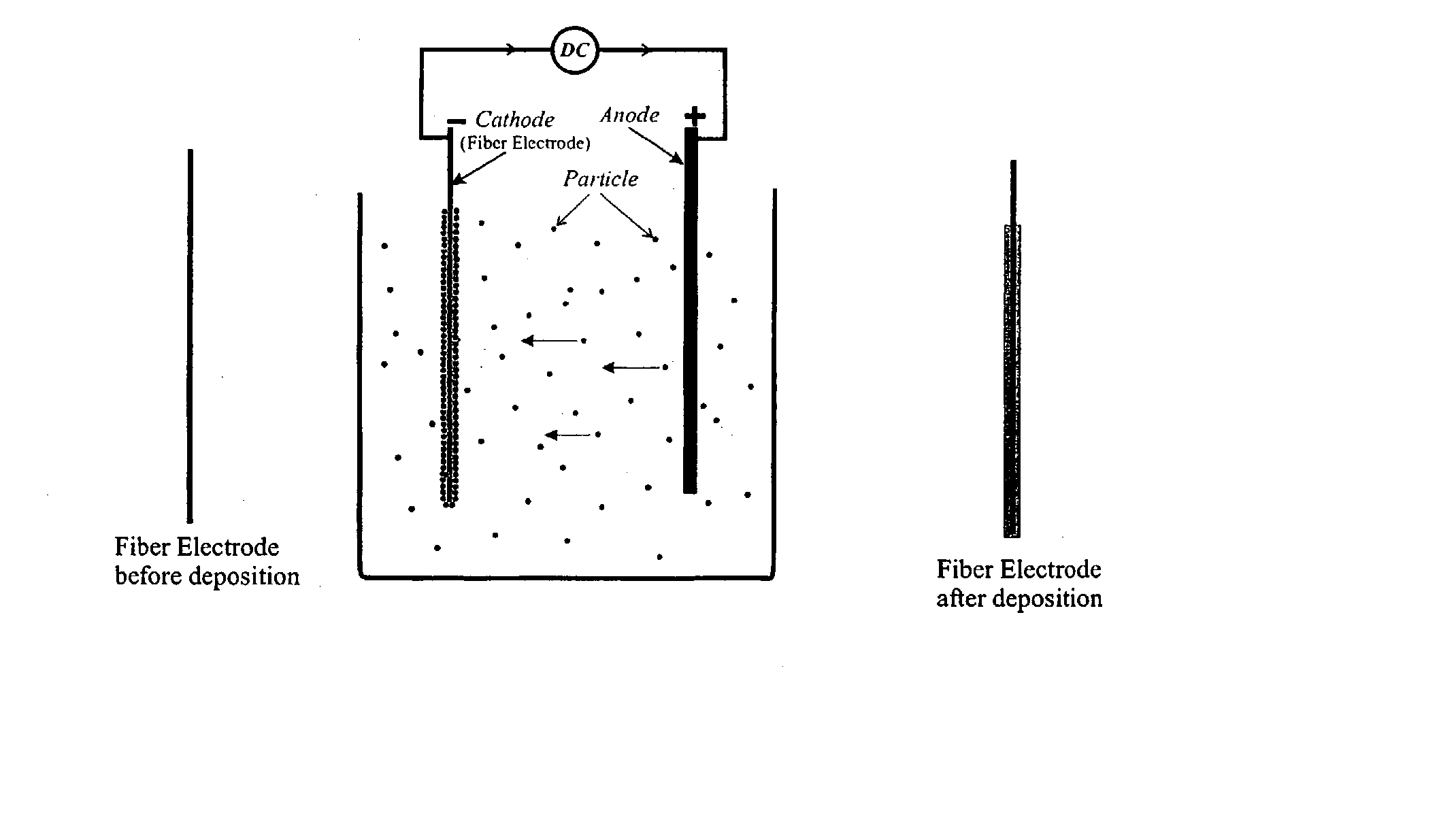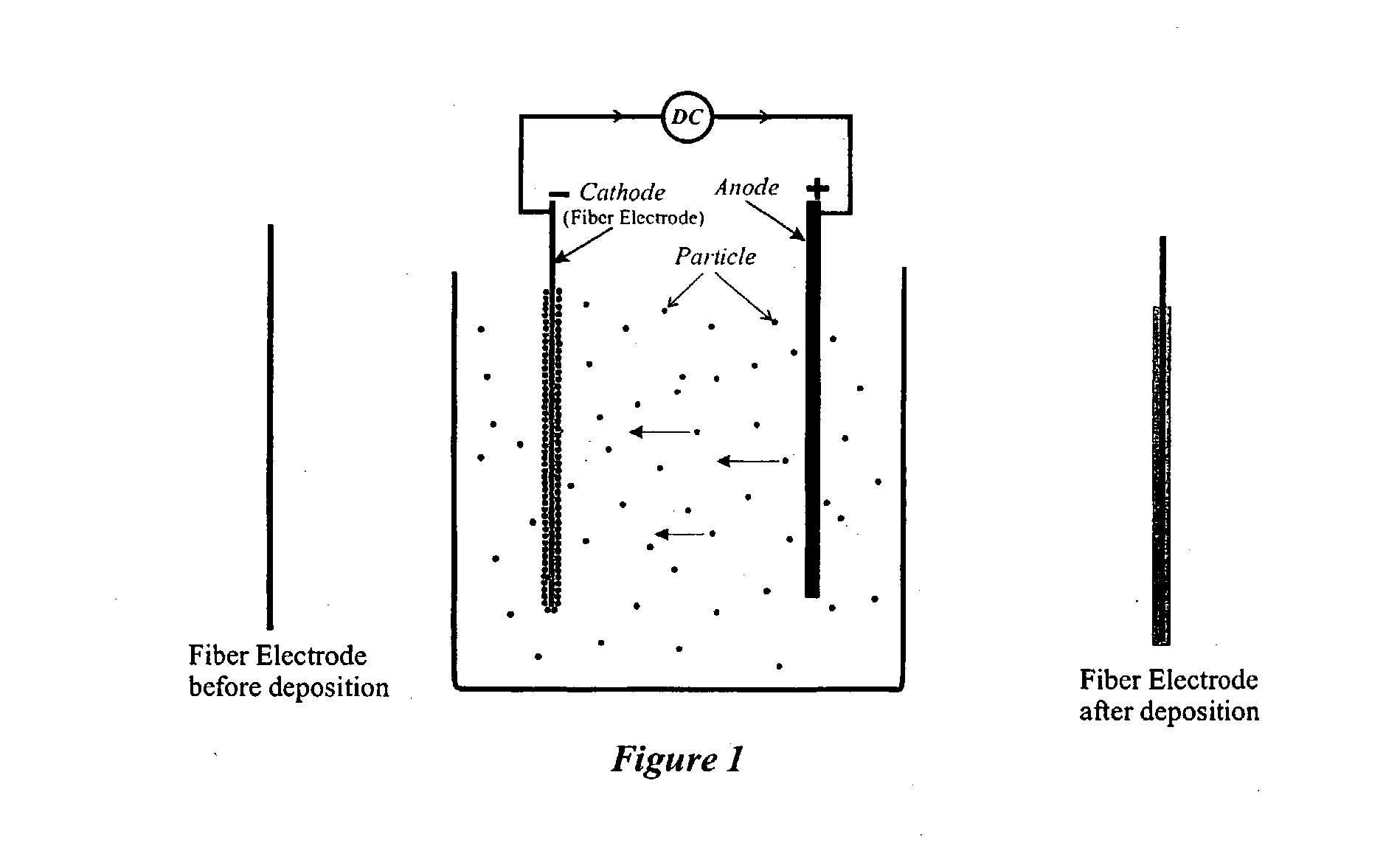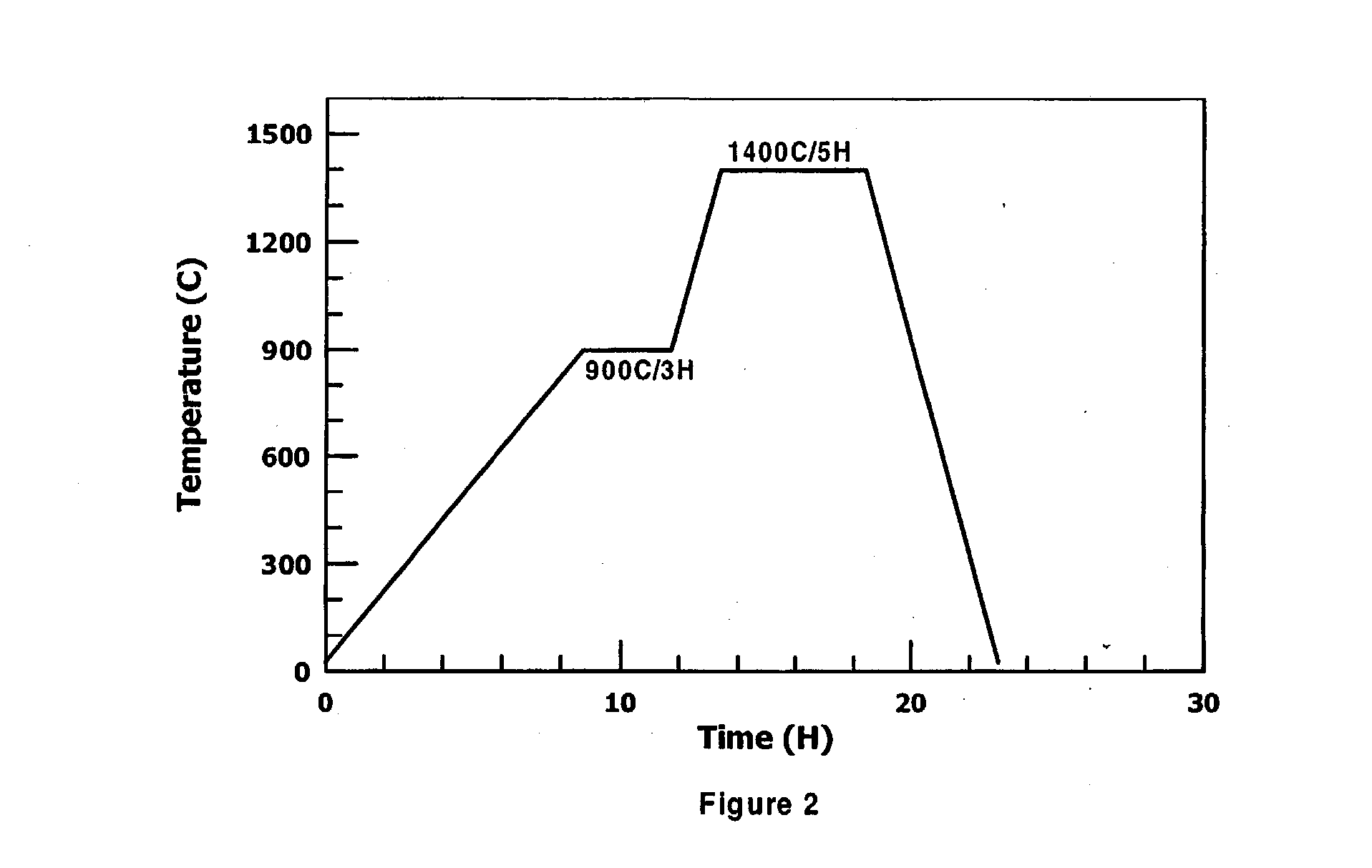Production of hollow ceramic membranes by electrophoretic deposition
a technology of electrophoretic deposition and ceramic membranes, which is applied in the direction of electrophoresis, electrolysis, fuel cells, etc., can solve the problems of difficult and costly methods, ceramic materials, and unavoidable hydrogen evolution, and achieve the effect of preventing infiltration of particulate materials
- Summary
- Abstract
- Description
- Claims
- Application Information
AI Technical Summary
Benefits of technology
Problems solved by technology
Method used
Image
Examples
example 2
[0080] In one example, particulate carbon black having a particle size range of about 20 nm to about 150 nm, was added to the alumina suspension prepared in accordance with Example 1 above in about 29 v / o such that the carbon and alumina were co-deposited onto the fibre core. The resulting ceramic membrane was sintered at 1250.degree. C. for 5 hours. FIG. 4 shows that the carbon black increases the porosity of the membrane.
example 3
[0081] An untreated fibre tow was used to deposit alumina particles as otherwise described in Example 1 above. The resulting ceramic membrane having a porous core is shown in FIGS. 5A and 5B. The core has a plurality of longitudinal holes, which correspond to individual filaments of the fibre tow.
example 4
[0082] Fibre cores comprising fibre tow of varying sizes was used for depositing alumina particles as otherwise described in Example 1 above. The fibre tow diameters used were approximately 400 .mu.m (FIG. 7) to 650 .mu.m (FIG. 8). The resulting ceramic tubes are shown in FIGS. 7 and 8.
PUM
| Property | Measurement | Unit |
|---|---|---|
| Length | aaaaa | aaaaa |
| Area | aaaaa | aaaaa |
Abstract
Description
Claims
Application Information
 Login to View More
Login to View More - R&D
- Intellectual Property
- Life Sciences
- Materials
- Tech Scout
- Unparalleled Data Quality
- Higher Quality Content
- 60% Fewer Hallucinations
Browse by: Latest US Patents, China's latest patents, Technical Efficacy Thesaurus, Application Domain, Technology Topic, Popular Technical Reports.
© 2025 PatSnap. All rights reserved.Legal|Privacy policy|Modern Slavery Act Transparency Statement|Sitemap|About US| Contact US: help@patsnap.com



